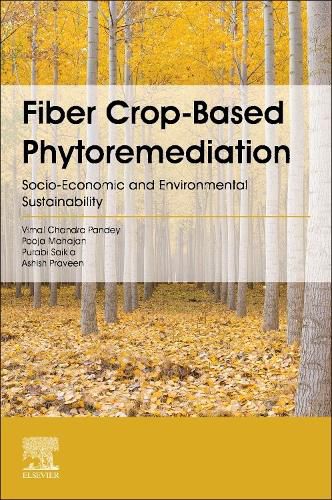Readings Newsletter
Become a Readings Member to make your shopping experience even easier.
Sign in or sign up for free!
You’re not far away from qualifying for FREE standard shipping within Australia
You’ve qualified for FREE standard shipping within Australia
The cart is loading…






Fiber Crop-Based Phytoremediation: Socio-economic and Environmental Sustainability provides an informative source of information on using fiber crops for phytoremediation. Phytoremediation is gaining attention globally due to ever-increasing numbers and areas of industrially polluted sites. The major challenge is to develop new and cost-effective solutions to decontaminate polluted sites. In this regard, plant-based remediation, especially using fiber crops, is a promising and cost-effective approach for environmental remediation on a large-scale due to its socio-economic and ecological sustainability. Furthermore, changing environmental conditions also cause various biotic and abiotic stresses in fiber crops and thereby negatively affect the fiber crop establishment, growth and yield.
This book will be specifically important to these readers who need to be able to select specific fiber crop species according to site-specificity of the contaminated site.
$9.00 standard shipping within Australia
FREE standard shipping within Australia for orders over $100.00
Express & International shipping calculated at checkout
Fiber Crop-Based Phytoremediation: Socio-economic and Environmental Sustainability provides an informative source of information on using fiber crops for phytoremediation. Phytoremediation is gaining attention globally due to ever-increasing numbers and areas of industrially polluted sites. The major challenge is to develop new and cost-effective solutions to decontaminate polluted sites. In this regard, plant-based remediation, especially using fiber crops, is a promising and cost-effective approach for environmental remediation on a large-scale due to its socio-economic and ecological sustainability. Furthermore, changing environmental conditions also cause various biotic and abiotic stresses in fiber crops and thereby negatively affect the fiber crop establishment, growth and yield.
This book will be specifically important to these readers who need to be able to select specific fiber crop species according to site-specificity of the contaminated site.